
Mrs. Miniver is a fictional British housewife created by Jan Struther in 1937 for a series of newspaper columns for The Times. The Mrs. Miniver story was later adapted into a film of the same name and starred Greer Garson in the titular role for which she won the Academy Award for Best Actress.

Eileen Evelyn Greer Garson was a British-American actress and singer. She was a major star at Metro-Goldwyn-Mayer who became popular during the Second World War for her portrayal of strong women on the homefront; listed by the Motion Picture Herald as one of America's top-10 box office draws from 1942 to 1946.
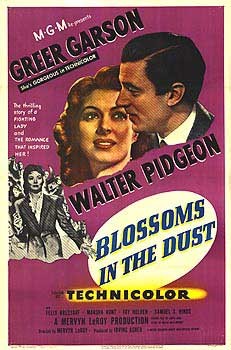
Blossoms in the Dust is a 1941 American biographical drama film directed by Mervyn LeRoy and starring Greer Garson, Walter Pidgeon, Felix Bressart, Marsha Hunt, Fay Holden and Samuel S. Hinds. It tells the story of Edna Gladney, who helped orphaned children find homes and began a campaign to remove the word "illegitimate" from Texas birth certificates, despite the opposition of "good" citizens. The screenplay was by Anita Loos, with a story by Ralph Wheelwright. Some of the important aspects of her life fictionalized in the film are the fact that it was Edna herself who was born out of wedlock; she and Sam eloped on the eve of her marriage to someone else, and they had much more time together before his death than given them in the film.
Madame Curie is a 1943 American biographical film made by Metro-Goldwyn-Mayer. The film was directed by Mervyn LeRoy and produced by Sidney Franklin from a screenplay by Paul Osborn, Paul H. Rameau, and Aldous Huxley (uncredited), adapted from the biography by Ève Curie. It stars Greer Garson, Walter Pidgeon, with supporting performances by Robert Walker, Henry Travers, and Albert Bassermann.
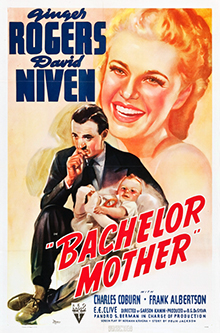
Bachelor Mother (1939) is an American romantic comedy film directed by Garson Kanin, and starring Ginger Rogers, David Niven, and Charles Coburn. The screenplay was written by Norman Krasna from an Academy Award-nominated story by Felix Jackson written for the 1935 Austrian-Hungarian film Little Mother. With a plot full of mistaken identities, Bachelor Mother is a light-hearted treatment of the otherwise serious issues of child abandonment.

Mrs. Parkington is a 1944 drama film. It tells the story of a woman's life, told via flashbacks, from boarding house maid to society matron. The movie was adapted by Polly James and Robert Thoeren from the novel by Louis Bromfield. It was directed by Tay Garnett and starred Greer Garson and Walter Pidgeon appearing together as husband and wife for the fourth time.
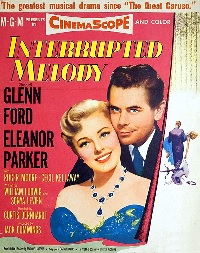
Interrupted Melody is a 1955 American musical biopic film starring Eleanor Parker, Glenn Ford, Roger Moore, and Cecil Kellaway. Directed by Curtis Bernhardt, it was filmed in CinemaScope and Eastman Color, and produced for Metro-Goldwyn-Mayer by Jack Cummings. With a screenplay by Lawrence, Sonya Levien, and William Ludwig, the operatic sequences were staged by Vladimir Rosing, and Eileen Farrell provided the singing voice for Parker. It tells the story of Australian soprano Marjorie Lawrence's rise to fame as an opera singer and her subsequent triumph over polio with her husband's help
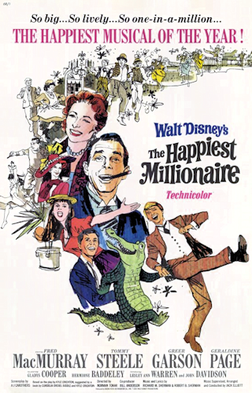
The Happiest Millionaire is a 1967 American musical film starring Fred MacMurray, based upon the true story of Philadelphia millionaire Anthony Drexel Biddle. The film, featuring music by the Sherman Brothers, was nominated for an Academy Award for Best Costume Design by Bill Thomas. The screenplay by A. J. Carothers was adapted from the play, based on the book My Philadelphia Father by Cordelia Drexel Biddle. Walt Disney acquired the rights to the play in the early 1960s. The film was the last live-action musical film to be produced by Disney before his death on December 15, 1966.
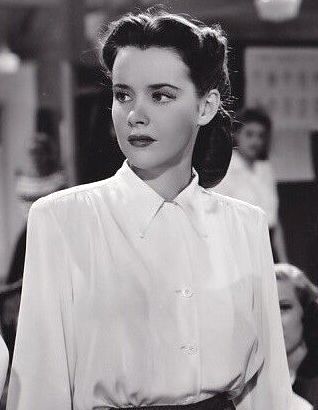
Susan Peters was an American actress who appeared in more than twenty films over the course of her decade-long career. Though she began her career in uncredited and ingénue roles, she would establish herself as a serious dramatic actress in the mid-1940s.
The Our Gang personnel page is a listing of the significant cast and crew from the Our Gang short subjects film series, originally created and produced by Hal Roach which ran in movie theaters from 1922 to 1944.

Where the Boys Are is a 1960 American CinemaScope comedy film directed by Henry Levin and starring Connie Francis, Dolores Hart, Paula Prentiss, George Hamilton, Yvette Mimieux, Jim Hutton, and Frank Gorshin. It was written by George Wells based on the 1960 novel of the same name by Glendon Swarthout. The screenplay concerns four female college students who spend spring break in Fort Lauderdale. The title song "Where the Boys Are" was sung by Connie Francis, who played one of the foursome.

Pride and Prejudice is a 1940 American film adaptation of Jane Austen's 1813 novel Pride and Prejudice, starring Greer Garson and Laurence Olivier. Directed by Robert Z. Leonard, the screenplay was written by Aldous Huxley and Jane Murfin, adapted specifically from the stage adaptation by Helen Jerome, in addition to Jane Austen's novel.

Mrs. Miniver is a 1942 American romantic war drama film directed by William Wyler, and starring Greer Garson and Walter Pidgeon. Inspired by the 1940 novel Mrs. Miniver by Jan Struther, it shows how the life of an unassuming British housewife in rural England is affected by World War II. Produced and distributed by Metro-Goldwyn-Mayer, its supporting cast includes Teresa Wright, May Whitty, Reginald Owen, Henry Travers, Richard Ney and Henry Wilcoxon.
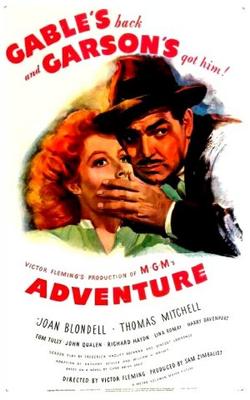
Adventure is a 1946 American romantic drama film directed by Victor Fleming and starring Clark Gable and Greer Garson. Based on the 1937 novel The Anointed by Clyde Brion Davis, the film is about a sailor who falls in love with a librarian. Adventure was Gable's first postwar film and the tagline repeated in the movie's famous trailer was "Gable's back and Garson's got him!" Gable had suggested "He put the arson in Garson," while Garson proposed "She put the able in Gable."
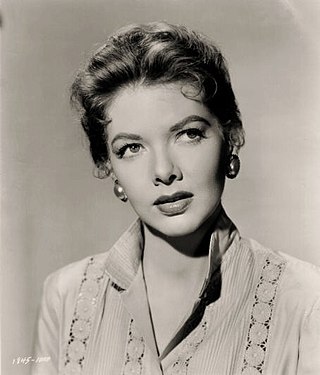
Barbara Jo Lawrence was an American model, actress, and real estate agent.
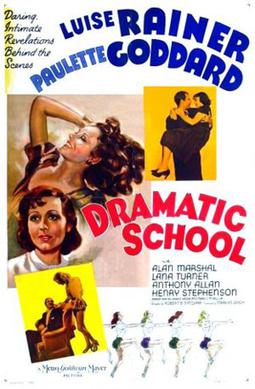
Dramatic School is a 1938 American romantic drama film directed by Robert B. Sinclair and starring Luise Rainer, Paulette Goddard, Alan Marshal, Lana Turner, and Gale Sondergaard. Based on the play School of Drama by Hans Székely and Zoltan Egyed, the screenplay was written by Ernest Vajda and Mary C. McCall. The film was produced and distributed by Metro-Goldwyn-Mayer.
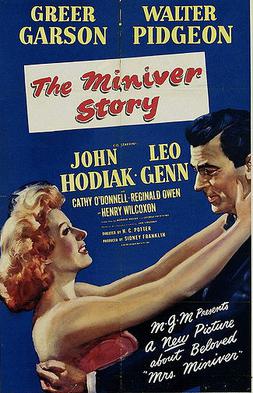
The Miniver Story is a 1950 American drama film that is the sequel to the 1942 film Mrs. Miniver. Like its predecessor, the picture, made by MGM, stars Greer Garson and Walter Pidgeon, but it was filmed on-location in England. The film was directed by H.C. Potter and produced by Sidney Franklin, from a screenplay by George Froeschel and Ronald Millar based on characters created by Jan Struther. The music score was by Miklós Rózsa and Herbert Stothart, with additional uncredited music by Daniele Amfitheatrof, and the cinematography by Joseph Ruttenberg.

When Ladies Meet is a 1941 American romantic comedy film directed by Robert Z. Leonard and starring Joan Crawford, Robert Taylor, Greer Garson, Herbert Marshall and Spring Byington. The screenplay by S.K. Lauren and Anita Loos was based upon a 1932 play by Rachel Crothers. Made by Metro-Goldwyn-Mayer, director Leonard also coproduced along with Orville O. Dull. The film was a remake of the 1933 pre-Code film of the same name, which had starred Ann Harding, Myrna Loy, Robert Montgomery and Frank Morgan in the roles played by Garson, Crawford, Taylor and Marshall.

That Forsyte Woman is a 1949 American romantic drama film directed by Compton Bennett and starring Greer Garson, Errol Flynn, Walter Pidgeon, Robert Young and Janet Leigh. It is an adaptation of the 1906 novel The Man of Property, the first book in The Forsyte Saga by John Galsworthy.

The Magic Garden of Stanley Sweetheart is a 1970 American film distributed by Metro-Goldwyn-Mayer (MGM) about a confused college student's experiences with sex, relationships, and drugs in late 1960s New York City. Produced by Martin Poll and directed by Leonard J. Horn, the film was based on the semi-autobiographical novel of the same name by Robert T. Westbrook, who was also an associate producer of the film. It was the film debut of Don Johnson, who appeared in the title role.



















